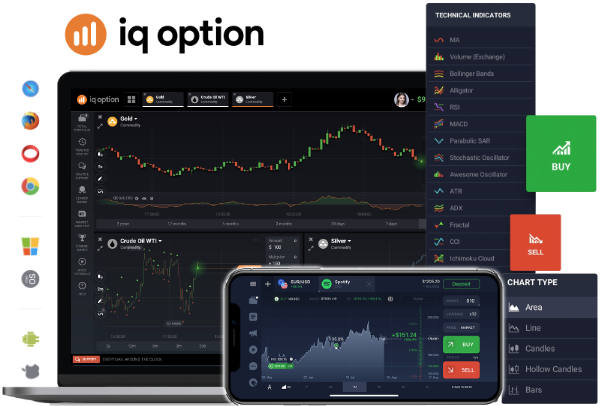Understanding Ethereum’s Scalability Challenges
Ethereum, the second-largest cryptocurrency by market capitalisation, has been a cornerstone of the blockchain ecosystem since its inception. However, as its popularity has surged, so too have the challenges associated with its scalability. This article delves into the various solutions that go beyond Layer-2 to address Ethereum’s scalability issues, providing a comprehensive overview of the current landscape and future prospects.
The Scalability Trilemma
Before diving into the solutions, it’s essential to understand the scalability trilemma, a concept coined by Ethereum’s co-founder, Vitalik Buterin. The trilemma posits that blockchain systems can only achieve two out of the following three attributes simultaneously:
- Decentralisation: The degree to which the network is distributed and not controlled by a single entity.
- Security: The ability to protect the network against attacks and ensure data integrity.
- Scalability: The capacity to handle a growing amount of transactions efficiently.
Ethereum has traditionally prioritised decentralisation and security, often at the expense of scalability. This has led to high gas fees and slower transaction times, particularly during periods of high network activity.
Layer-2 Solutions: A Brief Overview
Layer-2 solutions have been the primary focus for scaling Ethereum. These solutions operate on top of the Ethereum mainnet (Layer-1) and aim to increase transaction throughput while reducing costs. Some of the most notable Layer-2 solutions include:
- Optimistic Rollups: These aggregate multiple transactions into a single batch, which is then submitted to the Ethereum mainnet. They rely on fraud proofs to ensure the validity of transactions.
- Zero-Knowledge Rollups (zk-Rollups): Similar to Optimistic Rollups, but they use zero-knowledge proofs to validate transactions, offering enhanced security and efficiency.
- State Channels: These allow participants to conduct multiple transactions off-chain, with only the final state being recorded on the Ethereum mainnet.
While Layer-2 solutions have shown promise, they are not without limitations. This has led to the exploration of alternative approaches that go beyond Layer-2.
Sharding: A Promising Layer-1 Solution
Sharding is a Layer-1 solution that aims to improve Ethereum’s scalability by dividing the network into smaller, more manageable pieces called shards. Each shard operates as a separate blockchain, capable of processing its own transactions and smart contracts. This parallel processing significantly increases the network’s overall capacity.
Sharding is a key component of Ethereum 2.0, the next major upgrade to the Ethereum network. The implementation of sharding is expected to occur in multiple phases:
- Phase 0: The launch of the Beacon Chain, which will coordinate the network of shards.
- Phase 1: The introduction of shard chains, which will initially handle data storage and consensus.
- Phase 1.5: The merging of the current Ethereum mainnet with the Beacon Chain and shard chains.
- Phase 2: The full implementation of sharding, enabling smart contracts and transactions on shard chains.
Sharding promises to enhance Ethereum’s scalability without compromising on decentralisation or security. However, its complexity and phased rollout mean that it will take time to realise its full potential.
Plasma: Off-Chain Scaling Solution
Plasma is another off-chain scaling solution that aims to increase Ethereum’s transaction throughput. It involves creating a network of child chains that operate independently of the Ethereum mainnet. These child chains can process transactions and smart contracts, periodically submitting summaries to the mainnet for finality and security.
Plasma offers several advantages:
- Increased Throughput: By offloading transactions to child chains, Plasma can significantly increase the network’s capacity.
- Reduced Costs: Transactions on child chains are typically cheaper than those on the mainnet.
- Enhanced Security: The periodic submission of summaries to the mainnet ensures the integrity of transactions on child chains.
Despite its potential, Plasma has faced challenges related to user experience and the complexity of implementing fraud proofs. As a result, it has seen limited adoption compared to other scaling solutions.
Sidechains: Independent Blockchains
Sidechains are independent blockchains that run parallel to the Ethereum mainnet. They are designed to be interoperable with Ethereum, allowing assets and data to be transferred between the mainnet and sidechains. This enables sidechains to handle a significant portion of the network’s transaction load, alleviating congestion on the mainnet.
Some notable sidechains include:
- xDai: A stablecoin-focused sidechain that offers fast and low-cost transactions.
- Polygon (formerly Matic Network): A multi-chain scaling solution that supports various Layer-2 and sidechain technologies.
- Skale: A network of elastic sidechains that can be customised for specific use cases.
Sidechains offer a flexible and scalable solution for Ethereum, but they come with trade-offs. Since they operate independently of the mainnet, they may have different security and decentralisation properties.
Ethereum 2.0: The Future of Ethereum
Ethereum 2.0, also known as Eth2 or Serenity, is a comprehensive upgrade to the Ethereum network that aims to address its scalability, security, and sustainability challenges. In addition to sharding, Ethereum 2.0 introduces several other key innovations:
- Proof of Stake (PoS): Ethereum 2.0 will transition from the current Proof of Work (PoW) consensus mechanism to PoS. This change is expected to reduce energy consumption and increase network security.
- Beacon Chain: The Beacon Chain is the central coordinator for the Ethereum 2.0 network, managing validators and shard chains.
- eWASM: Ethereum WebAssembly (eWASM) is a new virtual machine for executing smart contracts, offering improved performance and flexibility compared to the current Ethereum Virtual Machine (EVM).
The transition to Ethereum 2.0 is a multi-year process, with each phase building on the previous one. Once fully implemented, Ethereum 2.0 is expected to provide a scalable, secure, and sustainable platform for decentralised applications (dApps) and smart contracts.
Comparing Scalability Solutions
To better understand the various scalability solutions, it’s helpful to compare their key attributes. The following table provides a summary of the main solutions discussed in this article:
| Solution | Type | Scalability | Security | Decentralisation |
|---|---|---|---|---|
| Optimistic Rollups | Layer-2 | High | Moderate | High |
| zk-Rollups | Layer-2 | High | High | High |
| State Channels | Layer-2 | Moderate | High | High |
| Sharding | Layer-1 | Very High | High | High |
| Plasma | Off-Chain | High | Moderate | High |
| Sidechains | Independent | High | Variable | Variable |
Challenges and Future Directions
While the solutions discussed offer promising avenues for scaling Ethereum, they are not without challenges. Some of the key issues include:
- Complexity: Implementing and maintaining these solutions can be technically challenging, requiring significant expertise and resources.
- Interoperability: Ensuring seamless interaction between different scaling solutions and the Ethereum mainnet is crucial for a cohesive ecosystem.
- User Experience: Simplifying the user experience is essential for widespread adoption, particularly for non-technical users.
- Security: Maintaining robust security while scaling the network is a delicate balance that requires ongoing vigilance.
Despite these challenges, the Ethereum community remains committed to finding innovative solutions to enhance the network’s scalability. Ongoing research and development efforts are focused on refining existing solutions and exploring new approaches.
Conclusion
Ethereum’s scalability challenges have spurred a wave of innovation, leading to the development of a diverse array of solutions that go beyond Layer-2. From sharding and Plasma to sidechains and Ethereum 2.0, each approach offers unique advantages and trade-offs. As these solutions continue to evolve, they hold the potential to transform Ethereum into a highly scalable, secure, and decentralised platform capable of supporting the next generation of decentralised applications.
In summary, the key takeaways from this article are:
- The scalability trilemma highlights the trade-offs between decentralisation, security, and scalability.
- Layer-2 solutions like Optimistic Rollups, zk-Rollups, and State Channels offer significant scalability improvements but have limitations.
- Sharding, a Layer-1 solution, promises to enhance Ethereum’s scalability without compromising on decentralisation or security.
- Plasma and sidechains provide additional off-chain and independent scaling options, each with its own set of advantages and challenges.
- Ethereum 2.0 represents a comprehensive upgrade that addresses scalability, security, and sustainability through innovations like Proof of Stake and the Beacon Chain.
As the Ethereum ecosystem continues to grow and mature, the ongoing development and implementation of these scalability solutions will be crucial in ensuring its long-term success and viability.

Q&A Section
- Q: What is the scalability trilemma in blockchain technology?
A: The scalability trilemma posits that blockchain systems can only achieve two out of three attributes simultaneously: decentralisation, security, and scalability. - Q: What are Optimistic Rollups?
A: Optimistic Rollups are a Layer-2 solution that aggregates multiple transactions into a single batch, which is then submitted to the Ethereum mainnet, relying on fraud proofs for validation. - Q: How does sharding improve Ethereum’s scalability?
A: Sharding divides the Ethereum network into smaller pieces called shards, each capable of processing its own transactions and smart contracts, thereby increasing the network’s overall capacity. - Q: What is the role of the Beacon Chain in Ethereum 2.0?
A: The Beacon Chain is the central coordinator for the Ethereum 2.0 network, managing validators and shard chains, and facilitating the transition to Proof of Stake. - Q: What are the main challenges associated with scaling Ethereum?
A: Key challenges include technical complexity, interoperability between solutions, user experience, and maintaining robust security while scaling the network.
Here are a few informative articles on Ethereum’s scalability solutions, covering both Layer-2 technologies and beyond:
- “Scaling Solutions for Ethereum: Layer 2 and Beyond” from Analytics Insight discusses various Layer-2 solutions like rollups, state channels, and Plasma, which offload transactions from Ethereum’s mainnet to improve throughput and reduce fees. It also explores Ethereum 2.0’s transition to Proof of Stake and sharding, which further enhances scalability, security, and energy efficiency (Analytics Insight).
- “Layer-2 Solutions Explained: Scaling Ethereum and Beyond” from The Rogue Post delves into state channels, sidechains, rollups, and sharding, providing a detailed breakdown of how these technologies work. The article emphasizes the significant role of Layer-2 solutions in improving transaction speed and reducing costs, while also discussing the potential for future scalability through innovations like zk-Rollups and Optimistic Rollups (The Rogue Post).
- “Beyond Layer-2: Ethereum’s Scalability Solutions Explained” from IQOptions covers a range of Layer-2 options and introduces Ethereum 2.0’s comprehensive upgrades. It explains sharding and rollups in detail while also discussing how sidechains like Polygon contribute to scaling efforts. The article outlines Ethereum’s transition to Proof of Stake and how it complements Layer-2 solutions to enhance the network’s performance (Vacation Supermarket for travellers).
- “Ethereum Scaling Solutions: Layer 2 and Beyond” from Doubloin focuses on Ethereum’s roadmap, including upcoming features like sharding and cross-chain protocols. It explains how these developments, alongside Layer-2 rollups, will improve scalability and reduce congestion, making Ethereum more efficient and user-friendly (Doubloin).
These articles provide a solid foundation for understanding the various scalability solutions aimed at enhancing Ethereum’s efficiency and supporting its growing user base.












 How to trade CFD? (00:49)
How to trade CFD? (00:49) How to trade binary options*? (01:22)
How to trade binary options*? (01:22) Forex. How to start? (01:01)
Forex. How to start? (01:01)